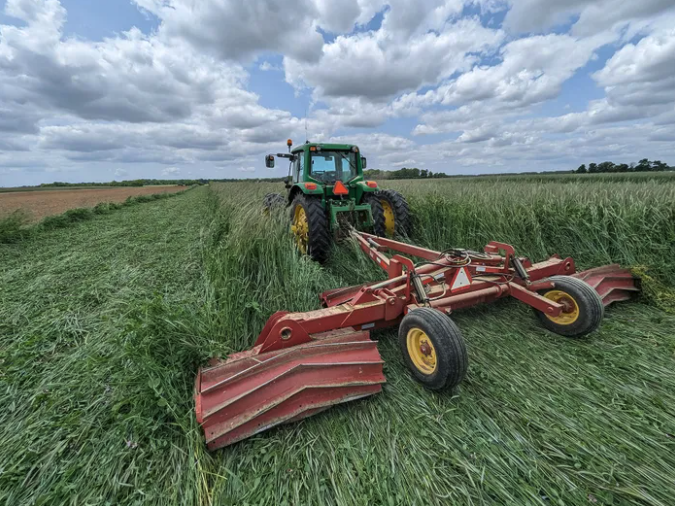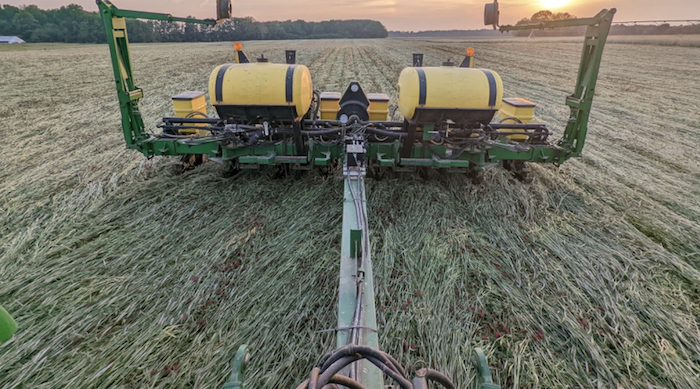Better Tools, Better Establishment
Kraszewski and Mason wanted a better way to deal with weeds, and to get crops planted.They purchased an eight-row, 20-foot John Deere 1760 planter, and a 20-foot folding-wing roller crimper to match the planter’s width. This required a second pass, but, “That was the first crucial step. We just needed to make sure our cover crop was more robust and doing a better job by starting out with a proper planter, with the proper tools,” Kraszewski says.
The mat from the rye-crimson clover cover crop is so thick, according to Stephen Kraszewski, that some years he doesn’t even have to go through and cultivate weeds. Photo courtesy of Stephen Kraszewski.
Playing Yield Catch-Up
Overall, yields have declined since transitioning to organic. Kraszewski says the farm averages two-thirds of the yields they once got farming conventionally. But they get paid twice the price for their grains.“So, in the end, I think it pays off very well,” he says, adding that the grains get hauled to elevators in Pennsylvania and on the Eastern Shore.The no-till organic soybeans yield even less, but Kraszewski insists they are getting close to the farm’s average. He says he is working with a grower from Virginia this spring on better timing of soybean planting and more roll-down options.
Along with a new planter, Stephen Kraszewski and his father-in-law, Bill Mason, bought a 20-foot folding-wing roller crimper to roll the multispecies cover crop before planting. Photo courtesy of Stephen Kraszewski.
Know How Covers Fit
Sarah Hirsh, Extension educator with University of Maryland Cooperative Extension in Somerset County, says growers should remember that cover crops are an investment.“You're paying for the seed; you're paying to put them out in the field whether that be aerial-seeded or tilled in. All of that costs money," she says. “So, it's all about getting the most bang for your buck.”Hirsh works with growers on thinking more intentionally about cover crops and how they fit in the overall cropping system. This involves a few things:- Thinking about the cover cropping window
- Figuring out the purpose of cover cropping
- Being realistic about what the cover crops will provide
- Putting things down on paper





Post a comment
Report Abusive Comment